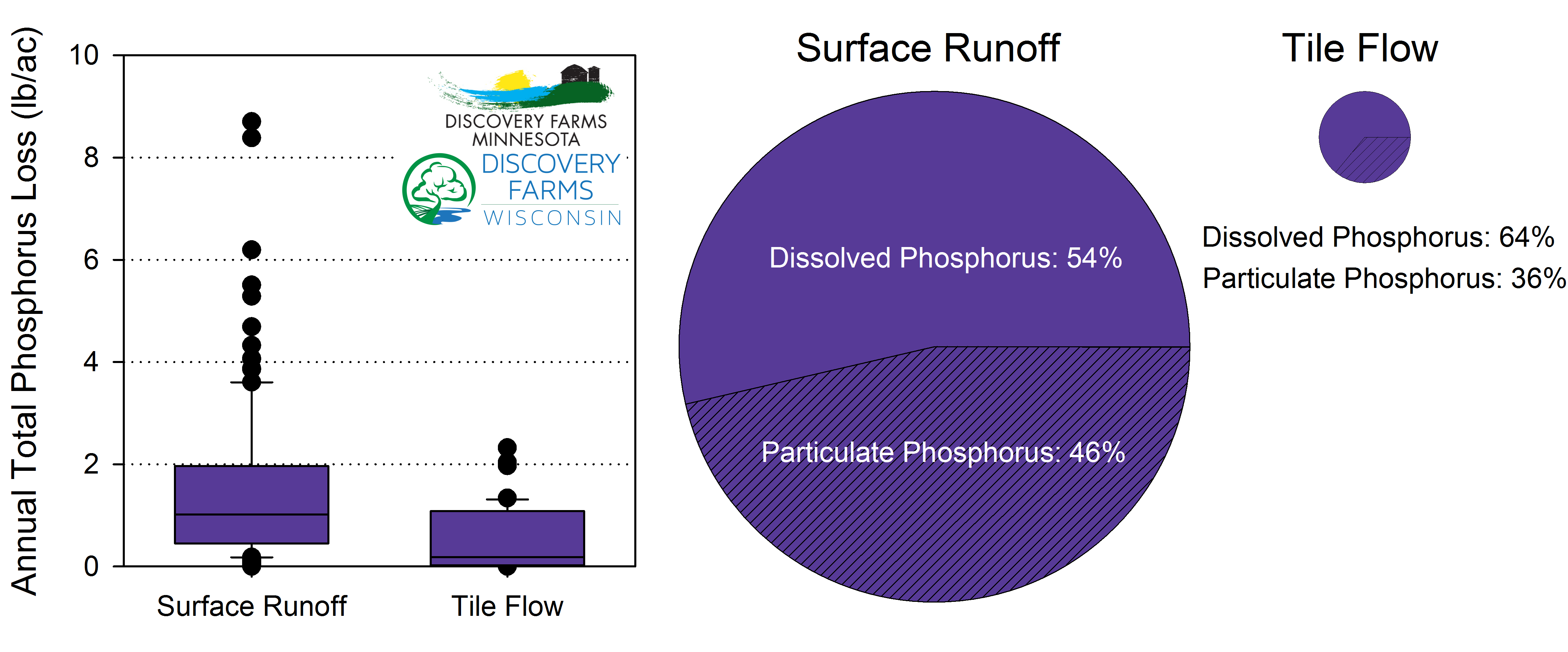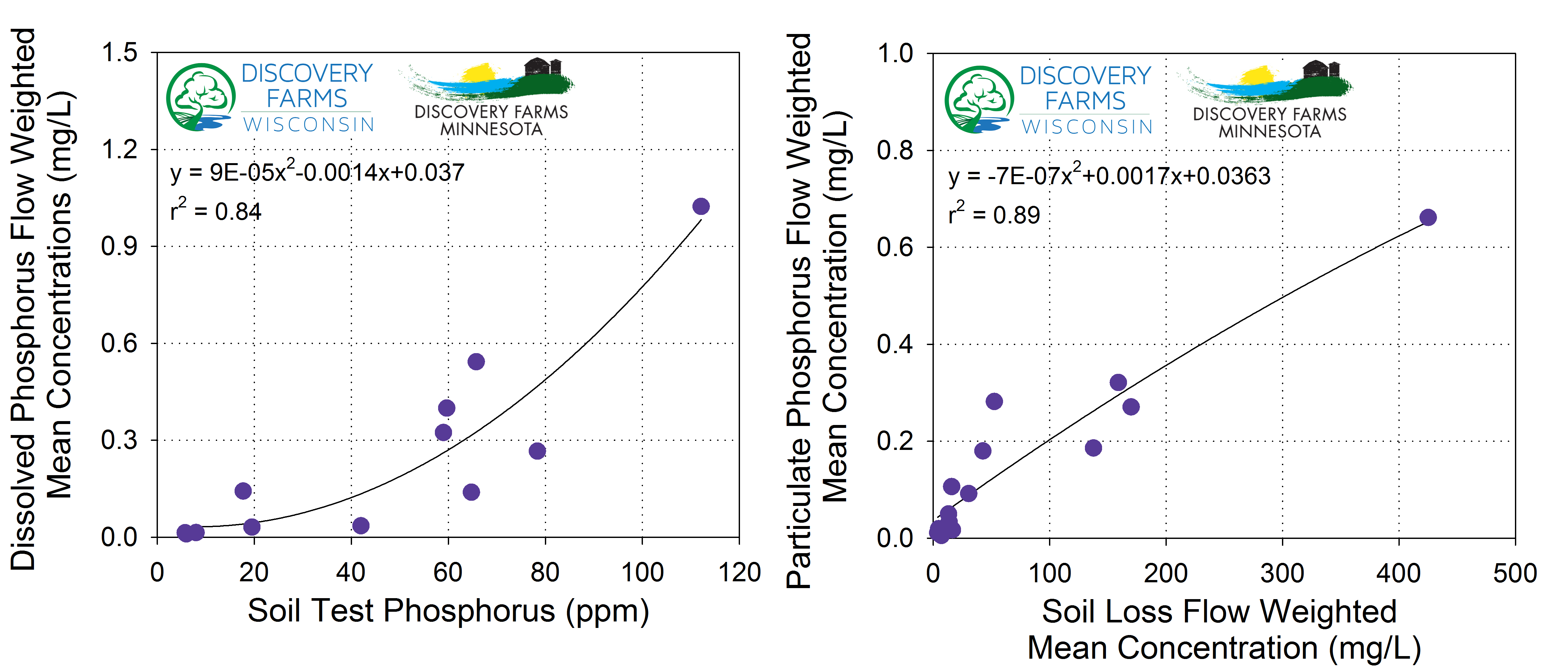Discovery Farms programs in Minnesota and Wisconsin have collected edge-of-field water quality information from 24 farms and 45 fields starting in 2002. A total of 112 site years of surface runoff data and 47 site years of tile flow have been collected at the various locations. This large dataset allows for review and analysis of important water quality topics. This blog examines the factors that impact phosphorus loss in tile systems.
Phosphorus is mainly transported by surface runoff, however, there are a few tile sites with higher losses. For surface runoff, the median annual total phosphorus loss was 1.00 lb/ac with a typical range from 0.45 to 1.88 lb/ac. For tile flow, the median annual total phosphorus loss was 0.20 lb/ac with a typical range from 0.05 to 1.18 lb/ac. Also, 64% of the total phosphorus that moved through the tile systems was in the dissolved form compared to only 54% in surface runoff.
There are two keys to reducing phosphorus losses in tile drainage systems:
Manage soil test phosphorus levels
Dissolved phosphorus concentrations increased as soil test phosphorus levels increased at Discovery Farm locations (bottom left graph). Routine soil testing and following University recommendations for phosphorus fertilizer applications will effectively manage soil test phosphorus levels and reduce dissolved phosphorus losses.
Prevent soil loss in tile systems
Particulate phosphorus concentrations increased as soil loss concentrations increased (bottom right graph). Updating and maintaining tile drainage systems will decrease the amount of soil loss and subsequently particulate phosphorus. For more information on soil loss in tile systems see our previous blog here. For more information on updating and maintaining tile drainage systems visit http://bit.ly/2fqc22J.
- Lessons Learned from Schafer Farms – Implementing Conservation in a Rolling Landscape - April 8, 2020
- What happened to spring? - July 15, 2019
- Tile flow and nutrient movement in Northwest Minnesota - September 13, 2018

